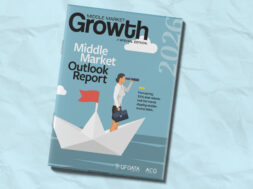How AI Platforms Are Changing the Game for Alternative Investment
Dr. Mohammad Rasouli explores how smaller funds can adopt AI to strengthen key processes, including deal sourcing

The investment world is on the cusp of a significant transformation, thanks to the integration of Artificial Intelligence (AI) into its core processes. The burgeoning role of AI is in creating competitive advantages for investment funds and Limited Partners (LPs).
The funds are transitioning from reliance on fragmented third-party AI solutions to coherent AI platforms. These coherent AI platforms, which can be developed by the fund itself or with the help of a third party AI provider, aggregate the fund data and allow for deriving all AI use cases in a coherent way and with a connected UI. While all the major funds have access to these AI platforms, smaller funds are just learning about them and require the help of third party providers to implement them.
Among the use cases of AI, deal sourcing and deal insight are the priority focus for large funds, which use the power of AI for alpha generation, not merely document processing and other limited operational efficiency use cases.
AI’s Rising Influence in Investment Strategies
In an increasingly competitive landscape, investment funds and LPs are under constant pressure to innovate and improve efficiency. AI presents a novel solution, automating key aspects of the investment process to provide an edge.
Related content: Revolutionizing Middle-Market Deal Sourcing: The Role of Artificial Intelligence
Deal sourcing and deal insight are critical AI use cases in investment, with some of the largest funds having already adopted AI for these purposes.
The focus on deal sourcing and deal insight by these large funds is for several reasons:
- Competitive edge: AI’s ability to rapidly identify and assess investment opportunities gives funds an advantage in a competitive market.
- Efficient discovery: AI automates the deal sourcing process, covering more ground faster than traditional methods.
- Enhanced analysis quality: AI provides deeper, data-driven insights into potential investments, leading to better-informed decisions.
- Customized relevance: AI systems tailored to a fund’s strategy ensure relevant and aligned deal recommendations.
- Alternative data analysis: AI excels in interpreting non-traditional data sources, uncovering unique investment insights.
- Speed in Decision-Making: AI’s rapid analysis capabilities enable quicker responses to emerging opportunities.
- Scalability: AI allows funds to scale their deal sourcing and insight operations without significant increases in resources.
- Continuous Improvement: AI platforms evolve, improving their accuracy and relevance over time.
Fragmented Third-Party or In-House Development Risks
The AI journey for funds hasn’t been straightforward. Initially, funds turned to multiple third-party AI software solutions, or built proprietary, fragmented in-house solutions. But these tools often fell short for reasons including:
- Lack of tailored outcome to the fund: Third-party solutions often offer a one-size-fits-all approach, disregarding the unique investment strategies and needs of individual funds.
- Limited intelligence and learning: Without direct access to a fund’s internal data and operations, these external tools cannot evolve in intelligence or learn from the fund’s unique decision-making processes.
- Privacy and security concerns: Sharing sensitive data with third-party providers poses significant risks especially when dealing with proprietary and competitively sensitive information.
- Inefficiency of fragmentation: Fragmented AI tools are typically designed for specific tasks or segments of the investment process. This approach can lead to a fragmented system where different tools do not communicate effectively with each other, leading to inefficiencies and a lack of cohesion in the investment strategy. These fragmented developments are also often way more costly and resource consuming to build.
- Generic Outputs: Often, the insights and outputs generated by third-party AI tools lack the depth and specificity required for high-stakes investment decisions. These generic results fail to provide the nuanced understanding that funds need for making informed, strategic decisions.
These limitations have propelled the shift towards in-house AI platforms as funds seek more tailored, secure and integrated AI solutions that align closely with their specific operational and strategic objectives.
In-House AI Platforms: The New Norm
Addressing these deficiencies, many funds are now developing bespoke AI platforms. These in-house solutions offer a range of benefits, including:
- Personalization: These tools are tailored to align with each fund’s unique investment thesis and requirements.
- Enhanced learning: Solutions facilitate constant interaction with fund data enables these platforms to grow smarter, providing increasingly refined insights.
- Diverse Use Cases: Unlike standalone software, these platforms can span multiple functions, integrating various investment cycle stages into a cohesive system.
While all the major funds have access to these AI platforms, smaller funds are just learning about them and require the help of third-party providers to implement them.
The Catalytic Role of Large Language Models
The advent of large language models like ChatGPT has fast-tracked the development of these in-house AI platforms. This is a game-changer for smaller funds to regain their competitive advantage, with a smaller investment in AI required. The large language models enhance the platforms’ capabilities in several key areas:
- Data handling: Structuring and cleaning vast amounts of unstructured data becomes more efficient.
- Advanced analytics: Large language models facilitate the interpretation of complex datasets, providing deeper insights for investment decisions.
- Privacy preservation: Open-source nature allows for customization and secure internal use, mitigating privacy concerns.
Practical Implementation and Future Prospects
Funds should prioritize use cases that offer high returns with relatively low risks, like deal sourcing and insights, which are ripe for AI application.
For funds considering their own AI platform, we suggest a structured approach, encompassing the identification of platform features, priority use cases, data sources and development strategies. Importantly, funds should not overlook privacy and compliance risks associated with AI technologies.
- Defining platform requirements and features: It’s vital to outline the specific needs and desired features of the AI platform. This includes adaptability, personalization capabilities, privacy measures and forward compatibility to accommodate future technological advancements.
- Identifying priority use cases: Funds should prioritize use cases that offer high returns with relatively low risks, like deal sourcing and insights, which are ripe for AI application. It’s also essential to extend the use of AI across various stages of the investment cycle, from early discovery to decision-making.
- Strategizing data management: Establishing robust data pipelines is crucial. This involves sourcing data from public databases, proprietary fund data and confidential data from target assets. Continuous data feeding is necessary for the AI platform to evolve and provide more accurate insights.
- Selecting models and algorithms: Opt for a mix of diverse algorithms and models, and consider enhancing them with large language models like ChatGPT. The choice of algorithms should be aligned with the specific tasks at-hand and the overall investment strategy of the fund.
- Building the development team: Decide whether to develop in-house or outsource. The team must possess technical prowess, an understanding of investment processes and the ability to collaborate closely with fund stakeholders. Outsourcing can offer speed and cost efficiency, especially for smaller funds, while in-house development can build internal capabilities.
- Cost considerations: The cost of building an AI platform varies, but leveraging open-source models like ChatGPT can reduce expenses. The development consists of three layers: infrastructure, public data training and personalization. The first two layers can often be shared across funds, while the personalization layer is unique to each fund and constitutes the primary value driver.
- Risk assessment and compliance: It’s crucial to regularly evaluate risks, particularly concerning privacy and data security. Implementing best practices in data management and ensuring compliance with regulations are non-negotiable aspects of developing an AI platform.
- User training and integration: Ensure that the fund’s staff are adequately trained to use the AI platform effectively. Seamless integration of the platform into existing systems and workflows is essential for maximizing its benefits.
Evaluating the Risks of AI Adoption
The largest risk in taking an AI response is not taking any action. The industry shift has already started, most major funds have started developing in-house tools and many smaller funds are conducting similar developments. Early movers will stay ahead of the curve in this space because of the tailored nature of their solutions. It takes time for a fund to prepare the infrastructure for its AI response, clean its historical data, learn its unique way of using AI and have the cultural transformation in using the technology.
Related content: AI: The Future of M&A
One major category of risk in using AI tools is privacy and compliance. As mentioned above, an AI platform should have a privacy-preserving feature.
There are three standard practices for this purpose: First, the fund should develop its in-house machine whenever training proprietary and private data. The in-house machine is kept on the fund servers securely to stop external leakage of the data. Second, the fund should train separate models with clear boundaries when working with the data from different assets under different NDAs. The models should consequently be deleted after the NDA timeline terminates. This practice forbids using data from one asset to generate insights on another asset. Finally, for highly sensitive data, e.g. HR data, the fund may consider not training the model directly on those, and instead use the machine to search through those documents for required outcomes. This way it becomes clear how sensitive data of each asset is used within its own insights.
While these three standards are basic practices, there are more privacy and compliance practices that a fund should consider.
The integration of AI in investment strategies represents a significant shift in how funds operate and compete. While the adoption of these technologies is not yet a universal standard, it is rapidly becoming a key differentiator in the market. AI is not just an auxiliary tool but a central component in the future of investment strategy development. A more cohesive, integrated approach to developing in-house AI platforms can significantly enhance their effectiveness and value addition.
Dr. Mohammad Rasouli is a thought leader in AI for investment. He is CEO and founder of Aix2 which helps funds to realize the benefit of tailored AI. Mohammad is ex-McKinsey from the Bay Area and the New York offices where he managed AI activation of top-20 private equity funds. He has PhD in Electrical and Computer Engineering with MA in Economics from University of Michigan. His post doctoral research in Stanford University has been on AI for marketplaces working with Nobel prize winners. His research has received 450+ citations. He is currently a visiting scholar researcher at Stanford Graduate School of Business. Mohammad has been a frequent speaker at top investment conferences and writes in journals to help the fund managers understand AI.
Middle Market Growth is produced by the Association for Corporate Growth. To learn more about the organization and how to become a member, visit www.acg.org.


